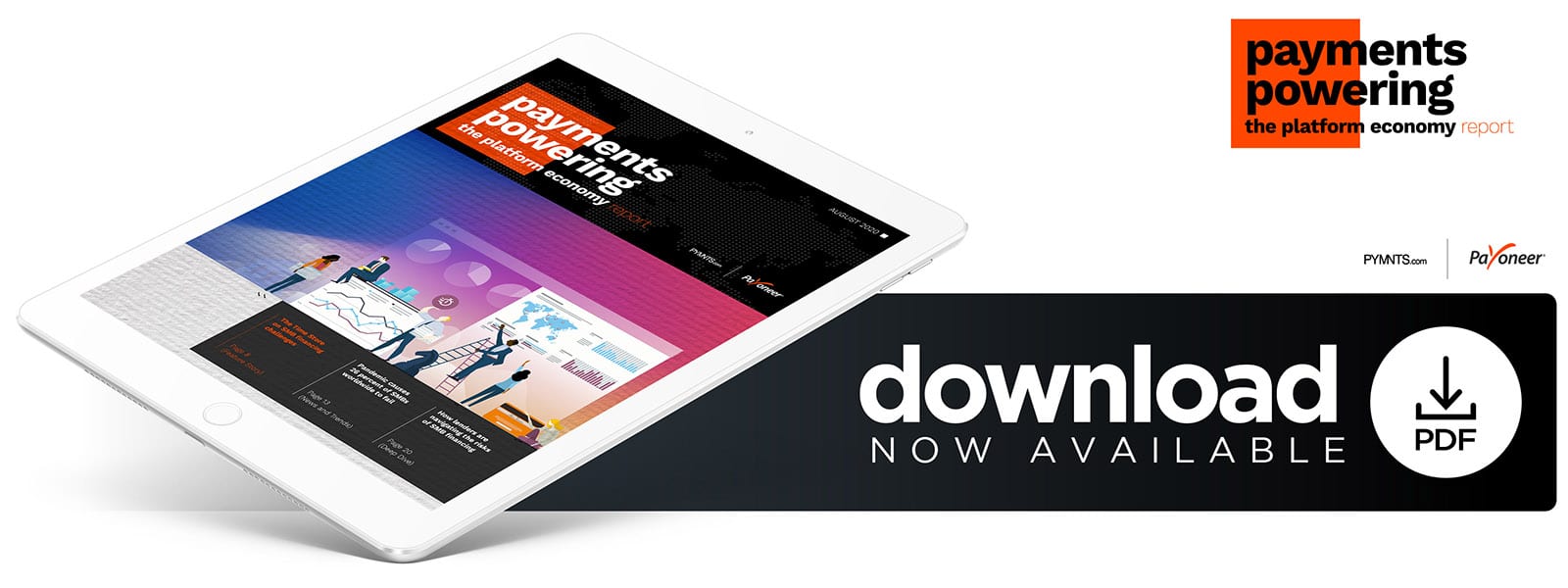The Time Store On The Challenges Involved In Digital SMB Financing

Digital-first businesses that need capital as a cushion for lumpy cash flow find tapping their banks for funds can be tedious and slow, says Abe Shak, CEO of accessories retailer The Time Store. In this month’s Payments Powering the Platform Economy Report, Shak explains how alternative lenders are stepping in.
Securing financing is common for small- to medium-sized businesses (SMBs), as 43 percent of these companies applied for fresh capital in 2018, for example.
These loans come in various forms through different sources, with some businesses looking to big banks to secure credit while others work with FinTechs or apply for corporate credit cards.
Accessing this financing can create headaches for SMBs, however. Less than half receive the capital amounts for which they apply, with banks reducing their credit lines or even rejecting their applications based on low credit scores, existing debt or weak business performance.
These obstacles to securing funding are driving many digital SMBs to alternative financing options, according to Abe Shak, CEO of online apparel seller The Time Store.
“Commercial banks have gotten stricter [in recent years], and they’ve tightened the string, so to speak,” he said in a recent interview with PYMNTS. “The market for third-party lenders is growing.”
PYMNTS spoke to Shak about why online SMBs frequently need new financing, what they look for when securing credit, and the obstacles that prevent them from acquiring credit quickly, instead driving them toward alternative lenders.
Why Digital SMBs Seek Financing
SMBs seek financing for numerous reasons, but the need for credit is especially pressing for digital-first businesses like The Time Store. The retailer cannot anticipate the sales of any given product before purchasing it, meaning financing is necessary to cover its potential losses.
“We’re basically paying in advance for product[s] that we don’t have the sales for, and as we’re doing that, we’re developing a sort of a cash flow burn because [sometimes] we over purchase or expect [a product] to sell faster than it does,” Shak explained. “At the same time, we are placing new orders for the product because the delivery takes some time. This creates … a cycle where unless you’re selling instantaneously or starting with a nice cushion in capital, you will undoubtedly need some sort of financing to help support your business moving forward.”
This problem is especially pronounced for seasonal businesses, Shak said. They experience ordering and delivery cycles similar to those experienced by other SMBs but that are spread across a much longer timeframe, as the firms must purchase inventory long before their peak seasons and may not have cash on hand to do so.
“Say 40 percent of your sales came in the fourth quarter, specifically the five-week period between Black Friday and Christmas,” he said. “You need to take financing in October so that you [can] have the goods ready by November [and] you’re well-prepared for that demand spike.”
Shak noted that this financing can come from a range of sources, but SMBs typically look for specific qualities in potential creditors.
What Online SMBs Look for in Financing
SMBs value three primary factors when it comes to selecting creditors: financing terms’ costs; time allowed for repayment; and repayment terms. These can vary wildly among financing options, with different options working better for specific situations.
“[Some companies give] you up [to] five months to pay it, but they set up [the repayment] as a percentage of your incoming [sales],” he explained. “[When others give] you a loan, meanwhile, they pull the money no matter what your sales are. So, whether you have it available or not, they’ll put it on your account as something that needs to be paid or as a liability.”
SMBs seeking financing need to beware of offers from shady companies that appear too good to be true, however. Plenty of disreputable lenders look to offer predatory loans, said Shak, but there are typically warning signs.
“They’re the ones that charge a cash advance, where they give you 30 percent interest rates and then they’ll take the first lien against other companies that you work with,” he explained.
SMBs, especially digital ones, face myriad challenges in addition to shady lenders. Ensuring that they can receive timely financing is a constant worry, as banks’ loan approval processes are often anything but quick.
Challenges in SMB Financing
SMBs like The Time Store usually need their loans approved quickly in the fast-paced eCommerce world. One of the most common frustrations is banks’ slow approval of loans, as the funds that actually come through are often too late.
“When you’re dealing with a big commercial bank, they really take a microscope to your business, and they really want to see everything,” Shak said. “The process itself becomes irritating to a degree because you know that you’re good for it and that your business is doing well, but a lot of times when you’re looking for the capital, it’s usually too late. If you’re going to go to a bank, you need to know well ahead of time that you are going to [receive] this funding in a month or two.”
This is why online SMBs frequently favor alternative lenders like FinTechs that deliver speedier loan approvals. Banks typically require much more information than FinTechs when determining whether to finance SMBs, often considering business owners as personal guarantors. This means that they take the owners’ personal credit into account and ask for some sort of personal collateral, like a mortgage. FinTechs, meanwhile, largely only consider the businesses in isolation, meaning that the loan can be approved faster and with less risk on the owners’ part.
This shift in preference to FinTechs could potentially revolutionize the SMB lending market as banks account for a smaller share of financing. This new paradigm could also result in a greater share of the SMBs receiving credit, bolstering the world economy at a time when it needs it most.

